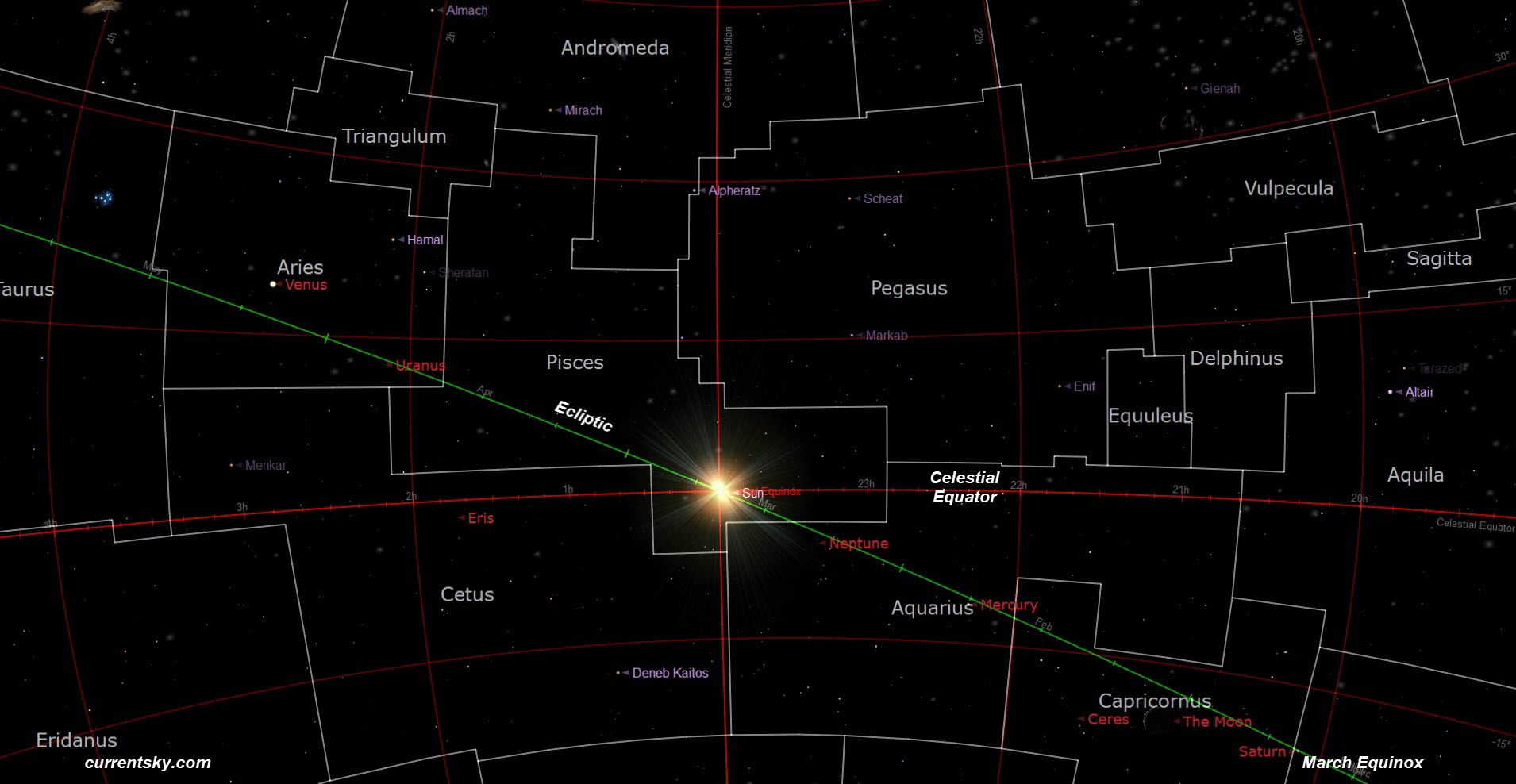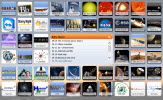March 2025
There will be a total lunar eclipse this month visible from much of North America, followed two weeks later with a partial solar eclipse, not visible from most of the United States.
This month will be our last look at the two inner planets as both move toward inferior conjunction during the last week of this montn. In the meantime Mercury is at one of its best apparitions (viewing) for this year, but as with Venus, is moving quivkly to a meet-up with the Sun.
With regard to the outer planets, Saturn is near solar conjunstioon so will not be visble until next when it reappears next month as a morning planet.
Jupiter shines brightly high overhead within the horns of Taurus the Bull. It is several degrees east from ALdebaran and the open star cluster the Pleiades.
Watch Mars slowly move eastward past the star Pollux in the Gemmini Twins.
The March Equinox officialy is on March 20th at 9:01 UTC (5:01 CDT) when the Sun reaches the celestial coordinates of 0o and 0hr or is described as being over the Earth's equator' at 0 latitude.
Click here for the month at a glance calendar.

What is this? "It's a prediction of when Lees Summit, MO, will have good weather for astronomical observing." Click on the graphic to go to the Clear Sky web site.

Mercury is moving into a great evening viewing opportunity for the first half of this month before very quickly moving into inferior conjunction on the 24th.
Venus follows Mercury's lead as it moves out of the evening skies into inferior conjunction toward the end of the month before it reappears in the morning skies at month's end.
Mars continues its eastward motion near the 'Twin stars', Polux and Castor as the three form a slowly shape-changing triangle.
Dwarf Planet Ceres moves into the morning skies but has an apparent magnitude that is too dim to be seen witout optical assistance.
Jupiter remains bright and easily seen high above the southern horizon amongst the stars of Taurus the Bull.
Saturn is at solar conjunction, too close to the Sun to be seen. Interestingly, but not visible, is that Saturn's rings will be edge-on as we see them. This is a regular cycle of about 28 years where we view Saturn's rings from above, edge-on and then from below. The 'ring-crossing' is approximately every 14 years.
Uranus is over the western horizon at sunset with an apparent magnitude of 5.7 could be visible with binoculars depending on the sky conditions.









